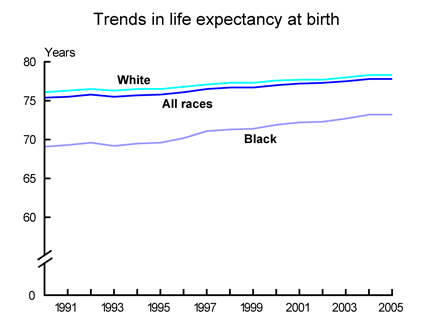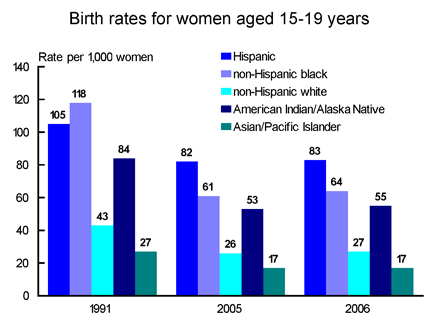Publications and Information Products
Information Sheet
June 2008
National Vital Statistics System
PDF version 93 KB
Page Content
About NCHS
National Vital Statistics System
National Death Index
Examples of NVSS Data
Challenges and Future Opportunities
About NCHS
The CDC's National Center for Health Statistics (NCHS) is the nation's principal health statistics agency, providing data to identify and address health issues. NCHS compiles statistical information to help guide public health and health policy decisions.
Collaborating with other public and private health partners, NCHS employs a variety of data collection mechanisms to obtain accurate information from multiple sources. This process provides a broad perspective to help us understand the population's health, influences on health, and health outcomes.
National Vital Statistics System
The National Vital Statistics System (NVSS) provides the nation's official vital statistics data based on the collection and registration of birth and death events at the state and local level. The NVSS provides the most complete and continuous data available to public health officials at the national, state and local levels, and in the private sector.
Vital statistics are a critical component of our national health information system, allowing us to monitor progress toward achieving important health goals.
Examples of NVSS data:
- Teen births and birth rates
- Prenatal care and birth weight
- Risk factors for adverse pregnancy outcomes
- Infant mortality rates
- Leading causes of death
- Life expectancy
National Death Index
The National Death Index (NDI) is a component of the NVSS, a central computerized index of death record information compiled from state data. The NCHS, in collaboration with state offices, established the NDI as a resource to facilitate epidemiological follow-up studies, and allow researchers to verify death for individuals under study.
Examples of NVSS Data
The preliminary birth rate for U.S. teenagers aged 15-19 years rose considerably in 2006, the first increase reported since 1991. Rates for teenagers had been declining steadily since the 1991 peak and fell 34 percent between 1991 and 2005, before the trend reversed in 2006.
- Trends in rates by race and Hispanic origin varied somewhat. The largest single-year increase was reported for non-Hispanic black teenagers, whose overall rate rose 5 percent to 64 births per 1,000.
- Increases for other groups were 2 percent for Hispanic teenagers (to 83), 3 percent for non-Hispanic white teenagers (to 27), and 4 percent for AI/AN teenagers (to 55). The birth rate for API teenagers was essentially unchanged.
The prevention of teen births has important consequences for both the teen mother and her infant. Teenagers are least likely to receive timely prenatal care, more likely to smoke when pregnant, and more likely to have a low birth weight infant.
- In 2005, life expectancy at birth was 77.8 years for all races, 78.3 years for whites, and 73.2 years for blacks.
Other findings include:
- The age-adjusted death rates for the following seven leading causes of death increased significantly between 2004 and 2005: Chronic lower respiratory diseases (5.1 percent), unintentional injuries (3.7 percent), Alzheimer's disease (5.0 percent) Influenza and pneumonia (2.5 percent), hypertension (3.9 percent) Parkinson's disease (4.9 percent) and homicide (3.4 percent).
- The data show a reduction in deaths due to heart disease (2.7 percent), cancer (1.1 percent), and stroke (6.8 percent) from 2004 to 2005. At least part of the reduction in the rate for stroke (perhaps as much as one-third) is due to changes in the coding rules.
- Mortality due to cataclysmic storms increased substantially from 2004 (63) to 2005 (874). This increase largely reflects deaths directly attributed to Hurricane Katrina and Rita, and a tornado in Indiana in November. Deaths reported to NCHS certified as due to Hurricane Katrina are likely to underestimate the actual number of deaths attributable to the storm. Deaths were attributed to a cataclysmic storm only if the storm was explicitly reported as a cause of death on the death certificate.
- The infant mortality rate for all races was 6.87 infant deaths per 1,000 live births in 2005. Between 1958 and 2001, the infant mortality rate either decreased or remained level each successive year.
- The infant mortality rate for non-Hispanic black infants is more than double the rate for non-Hispanic white infants in 2005. The rate for non-Hispanic white infants was 5.71 per 1,000 live births, compared with 14.28 for non-Hispanic black infants.
- Low birth weight (LBW) and preterm birth rates have each climbed about 20 percent since 1990, reaching levels in 2006 not seen for at least 25 years. The cesarean rate also reached a record high in 2006.
Challenges and Future Opportunities
- Implement new national model certificates of birth, death and fetal death events to improve data quality and update the content of these data sources to reflect new needs, such as the changing classification of race/ethnicity and new and emerging concerns in maternal and infant health and public health.
- Modernize the technology infrastructure of the nation's vital statistics system, moving states from outdated systems to web-based systems integrated with other public health information systems, and re-engineering the NCHS internal vital statistics processing system. This technology will allow for rapid compilation and use of these critical data sources, as well as for improved quality.
- In response to the Intelligence Reform and Terrorism Prevention Act, improve the security of birth certificates through the development and implementation of new minimum standards and State certification of compliance with those standards.
Page Last Modified: November 20, 2008
Data Source: CDC/National Center for Health Statistics
National Center for Health
Statistics
3311 Toledo Road
Hyattsville, MD 20782
Phone:
1-800-232-4636
nchsquery@cdc.gov
Centers for Disease Control and Prevention, 1600 Clifton Rd, Atlanta, GA 30333, U.S.A
Tel: (404) 639-3311 / Public Inquiries: (404) 639-3534 / (800) 311-3435

